Quick start guide
UpdatedWelcome to Customer.io! While the platform offers plenty of features and options, this guide provides a basic setup path to get you started quickly and demonstrate some of the things you can do with Customer.io. You’ll create a workspace, import at least one person, and set up your messaging channels!
Get started
This guide is designed to walk you through the most common parts of the setup path and introduce you to the major parts of our platform. When you start setting up Customer.io, we provide you with a Setup List on your Workspace’s Dashboard. You don’t have to do everything on the list, but you must do the following things before you can really take advantage of Customer.io:
- Create an account and a workspace.
- Set up the types of messages you want to send. On this page, we’ll set up email.
- Add people to your workspace. As a part of this guide, you’ll add yourself as a test person.
- Start sending messages!
In this guide, you’ll add a test person and send your test person a message, demonstrating how you’ll use your data to automate and personalize messages.
Create your workspace
After you create your account, you’ll make a workspace. You can think of a workspace as a container for your people, data, messages, etc. You can have more than one workspace, but, in general, you won’t share information across workspaces.
In general, we encourage you to use the default settings. They support most use cases and you can change them later!
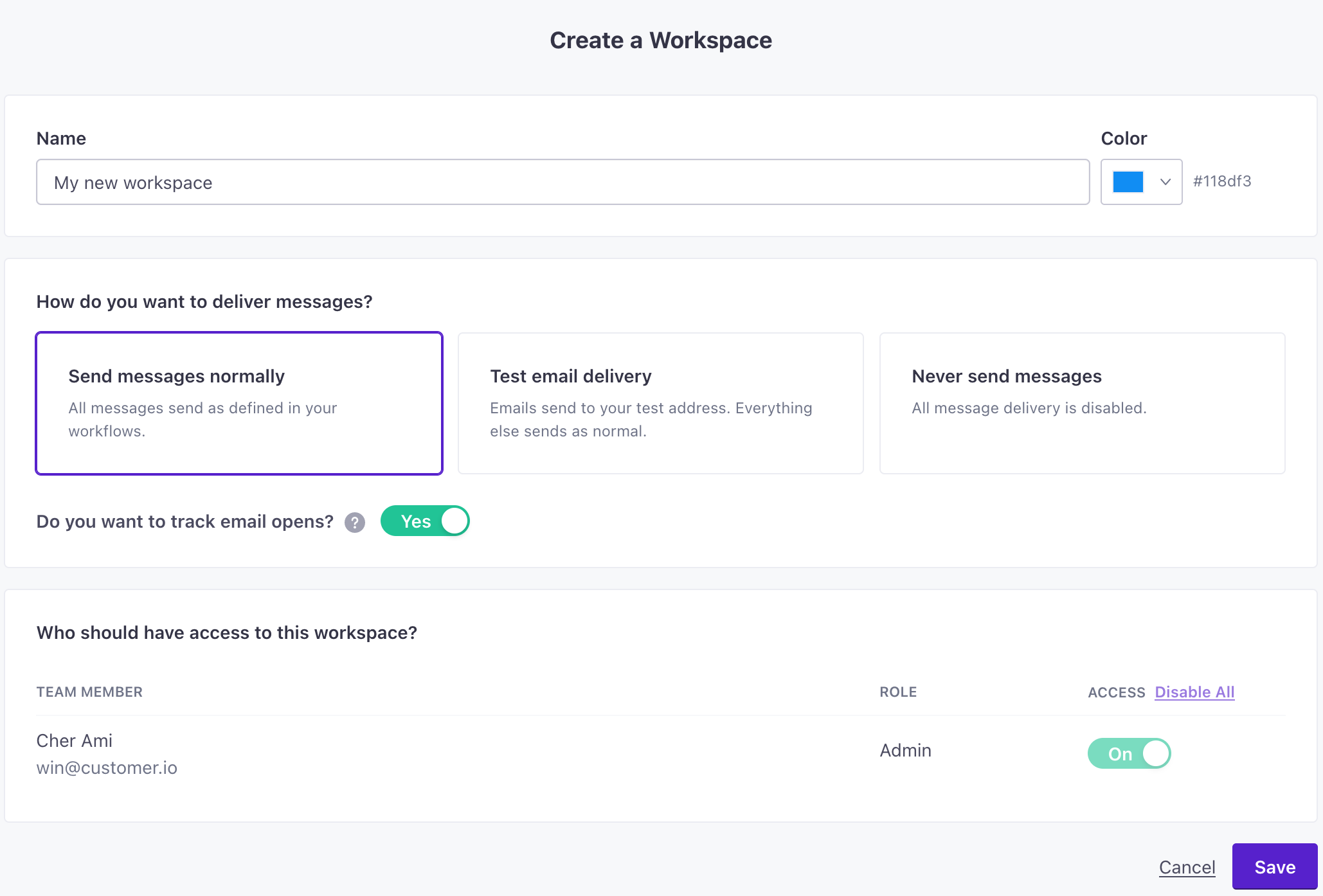

Set up your email channel
You can set up and send messages over different channels, but email is our most common—and one of the easiest to set up.
Before you can send messages, you need to configure the types of messages you want to send: email, push, in-app, SMS, or Slack. You can start with just one channel and add new ones later by going to Settings > Workspace Settings and clicking Get Started on the channel(s) you want to add.
- Enter your domain—like
example.com.

- Enter your From address(es). These are the addresses that your messages will come from.
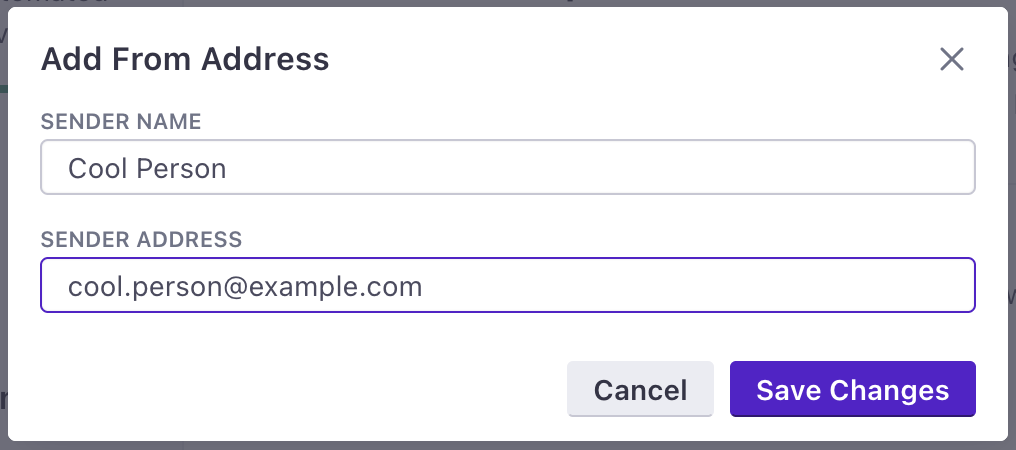

- Verify and authenticate your domain(s). This involves adding some records to your domain host.
- (Recommended) Set up link tracking so you can record the links that people click in your messages. This involves adding a CNAME record to your domain host(s).
Start sending emails slowly!
If you’re just getting started with Customer.io, you’ll need to start slowly. Sending a large number of emails right away can hurt your domain reputation and deliverability. See our guide to sending slowly for more information.
Add a test person to your workspace
To get started quickly, you can go to the People page in your workspace and add a person with a few attributes to test with.
In this case, you might want to add yourself to your workspace, so you can test a campaign against yourself and get a feel for Customer.io without inadvertently messaging your customers or users. Later in this guide, we’ll use your test person in a live segment and campaign.
- Go to the People page, click Add People and select Add a Person.
- Set your ID and email address. To make it easy, you might assign your test user an ID of
1. - Add first_name and last_name attributesA key-value pair that you associate with a person or an object—like a person’s name, the date they were created in your workspace, or a company’s billing date etc. Use attributes to target people and personalize messages. to your person. These are the values you’ll use to target your test person and personalize messages! You can add as many other attributes as you want, and we’ll show you how to take advantage of them later on this page.
- Click Save Changes when you’re done.
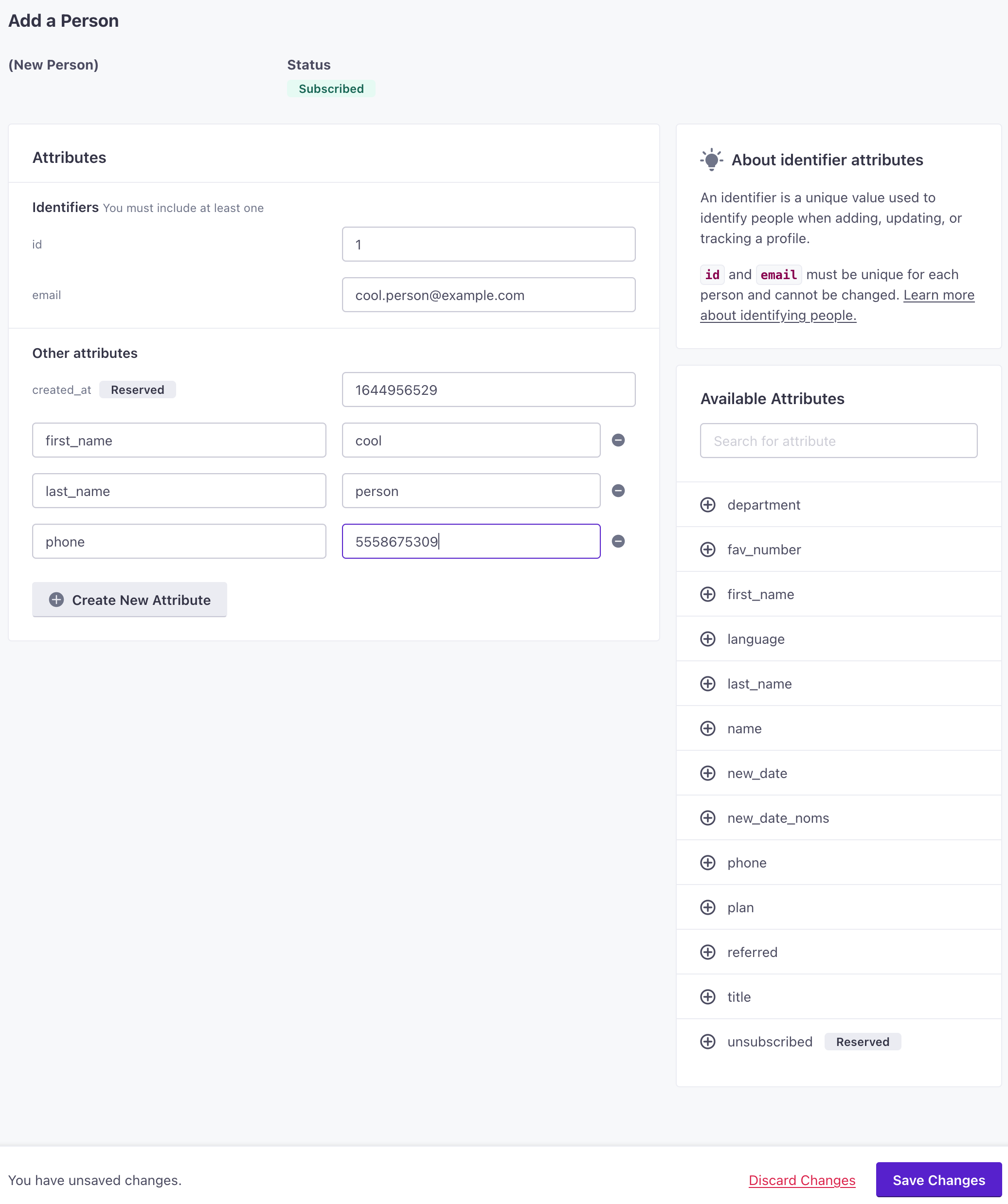

There are plenty of ways to add people
This process shows the easiest way to add a single person, but it’s not efficient for adding your whole audience. When you’re ready, you can learn more about adding people programmatically or by uploading CSVs.
What is a person in Customer.io?
It might help to understand what we mean by a “person”. In Customer.io, you’ll represent a person with data, the most important three data points being identifiers, attributes, and events.
- IdentifiersThe attributes you use to add, modify, and target people. Each unique identifier value represents an individual person in your workspace.: the values that make people unique in your system—like a database
idoremailaddress. - AttributesA key-value pair that you associate with a person or an object—like a person’s name, the date they were created in your workspace, or a company’s billing date etc. Use attributes to target people and personalize messages.: the things you know about people, like their names, interests, etc.
- EventsSomething that a person in your workspace did. Events can trigger campaigns, add people to segments, etc, and you can use properties from events to personalize messages.: the things that people do. You can use events to trigger campaigns in response to your audience’s activity in your system.
You can associate other data with people, like their relationships to objectsAn object is a non-person entity that you can associate with one or more people—like a company, account, or online course. (e.g. companies, accounts, etc) and their mobile devices, but the three things you’ll work with most often are identifiers, attributes, and events.
Before you add people, think about the attributes and events you want to track
You’ll use attributes and events to group people into segmentsA segment is a group of people in your workspace. Use segments to trigger campaigns, track membership over time, or fine-tune your audience. There are two types of segments: data-driven and manual. Data-driven segments automatically update when people start or stop matching criteria. Manual segments are static., determining who goes through your campaignsCampaigns are automated workflows you set up to send people messages and perform other actions when they meet your criteria. and who you send messages to. Plan out your “groups” of people and the types of messages you want to send to make sure that you gather the right data in Customer.io!
Create a campaign and send your person a message
Now that you’ve added a person and set up a message channel, you can set up a campaign to send your person a message.
- Go to Campaigns in the left-hand menu, then click Create Campaign.


- Click “Untitled” in the top left to change the name of the campaign so your team members can easily find it on the campaigns page.
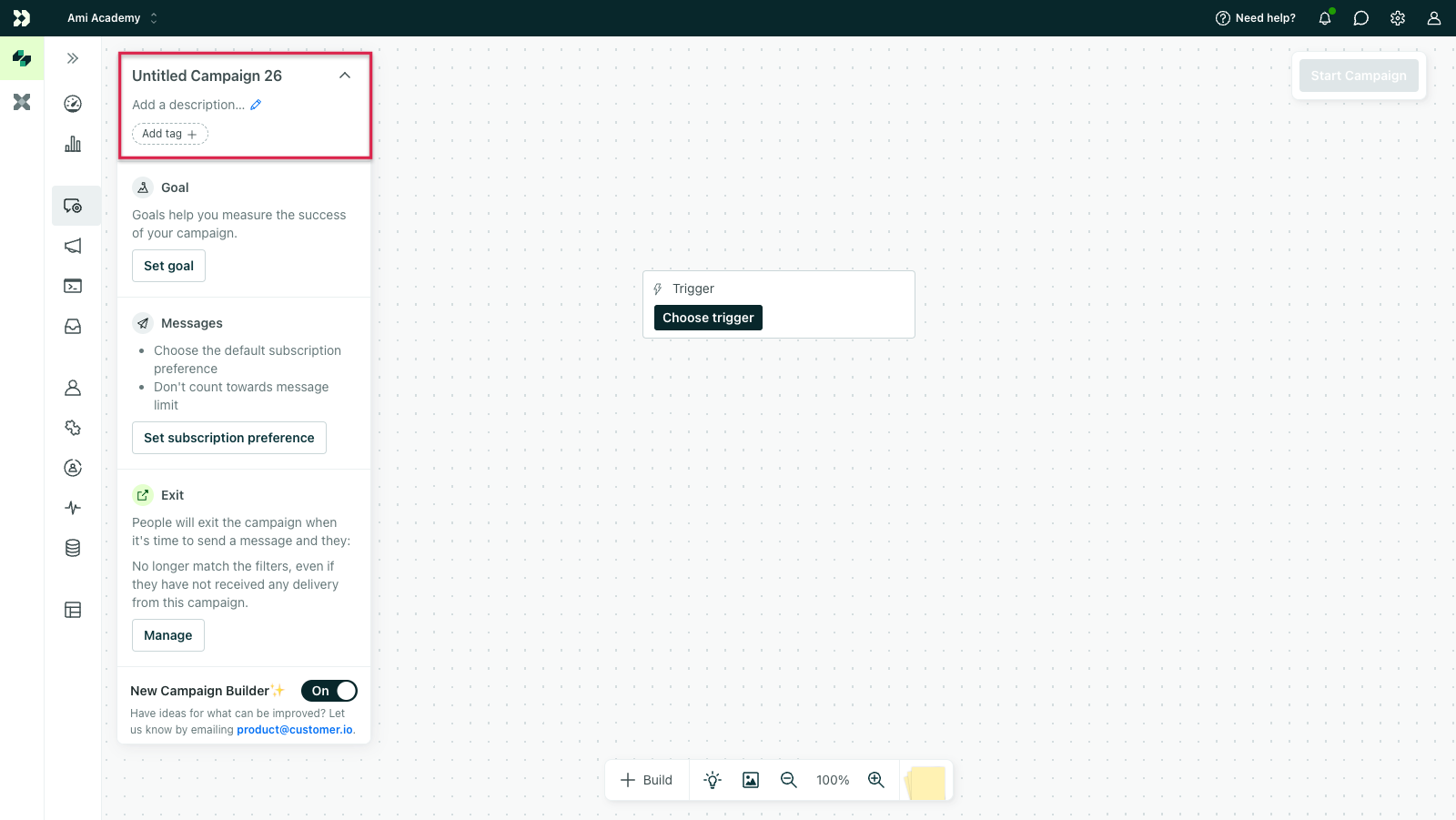

Set your trigger
- Click the trigger block on the canvas, and choose Segment change as your trigger type. Triggers determine who enters your campaign and when. In this example, people will trigger your campaign when people join a segment.
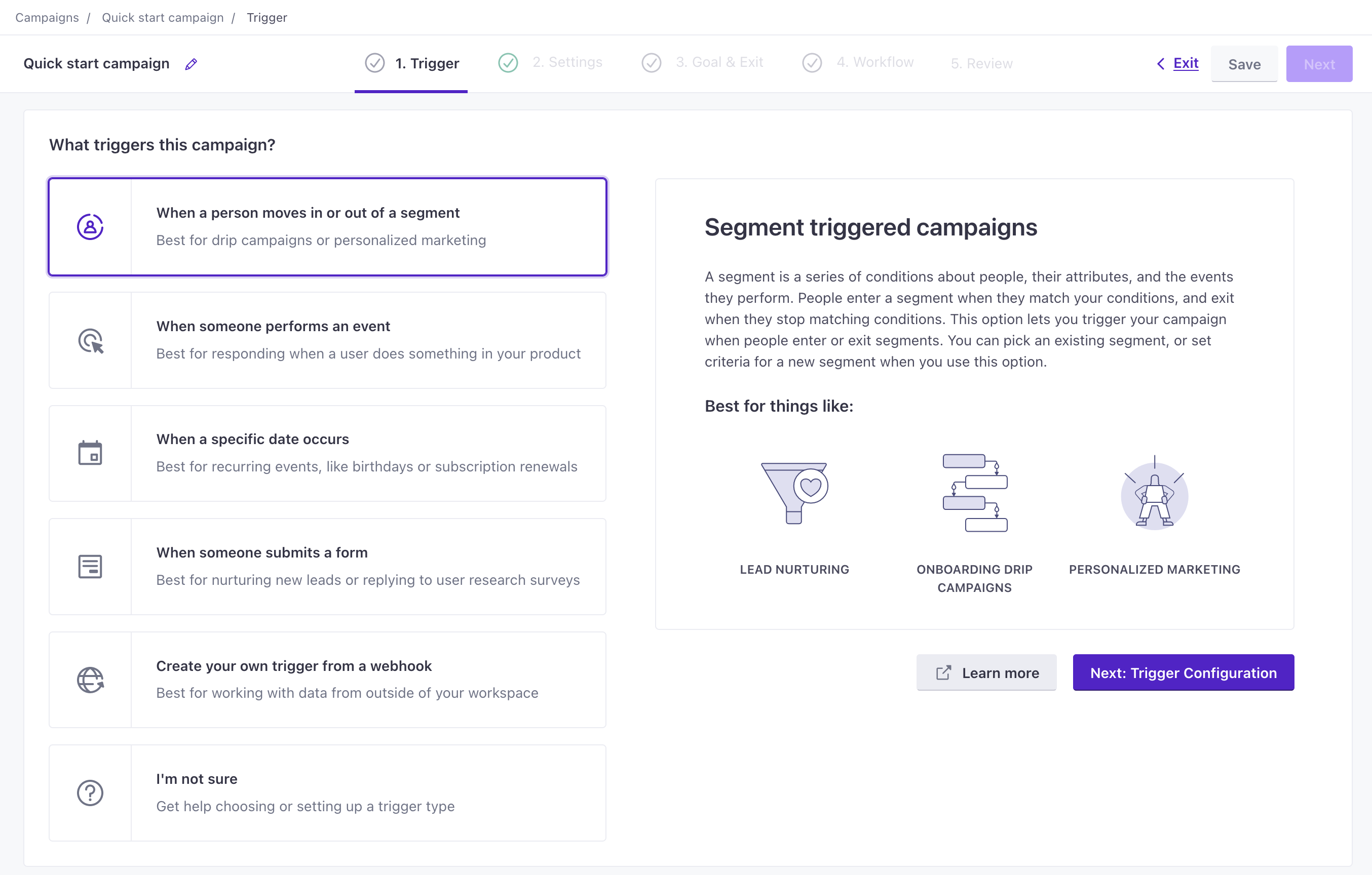

- Click the segments dropdown then choose Create a new data-driven segment.
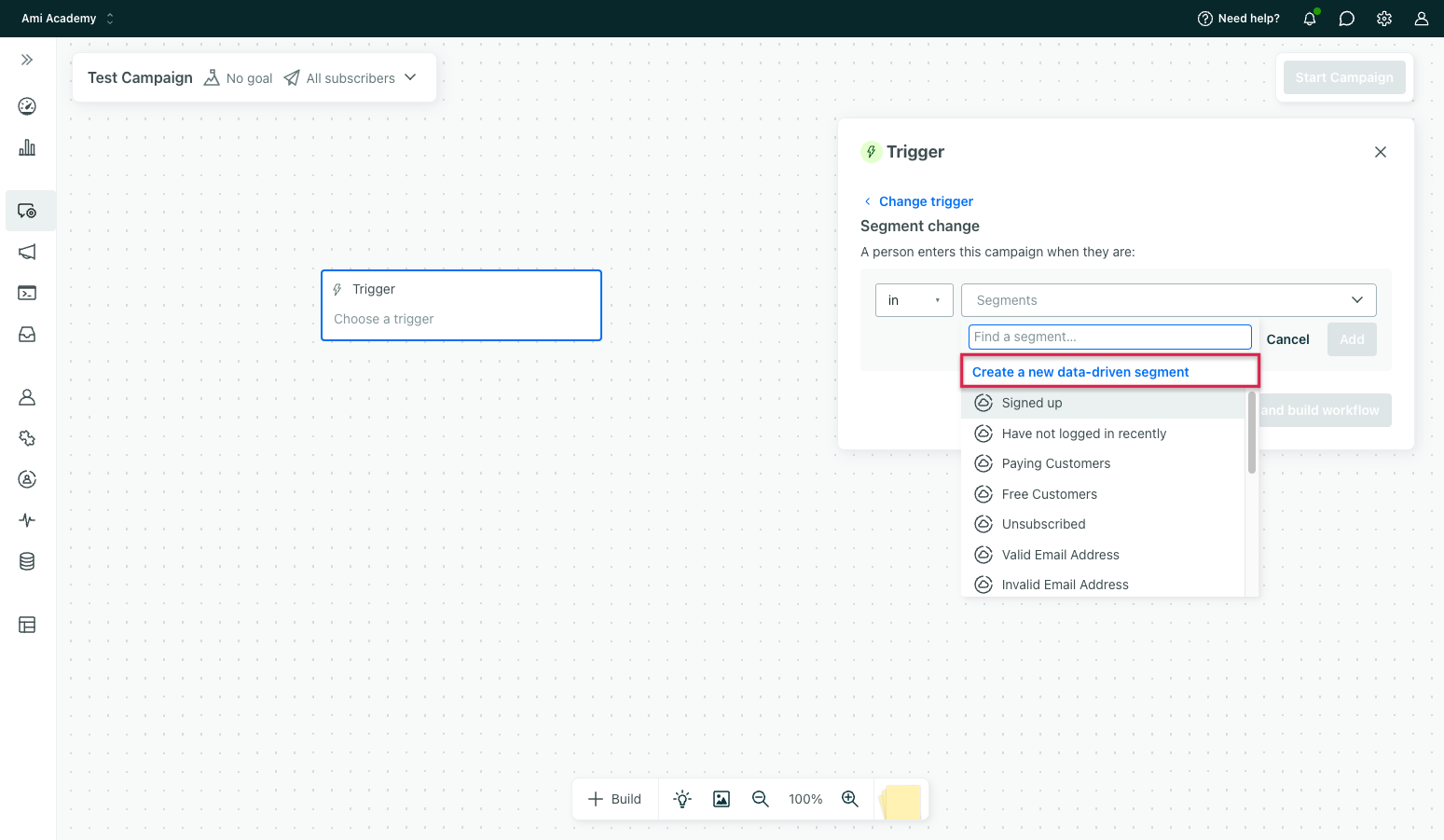

- Click Add condition or group. Select Attribute, choose
first_namefrom the profile attribute dropdown, and set your test person’s first name. If you have multiple people with thisfirst_name, choose another attribute so real members of your audience don’t enter this test campaign!

- Add a Name for your segment. You can filter by this on the Segments page.


- Click Create segment.
- Click Save and build workflow.
Create your workflow
- Click Build to see a menu of actions. Drag an Email onto the canvas.


- Click the email to edit the name then click Add Content.
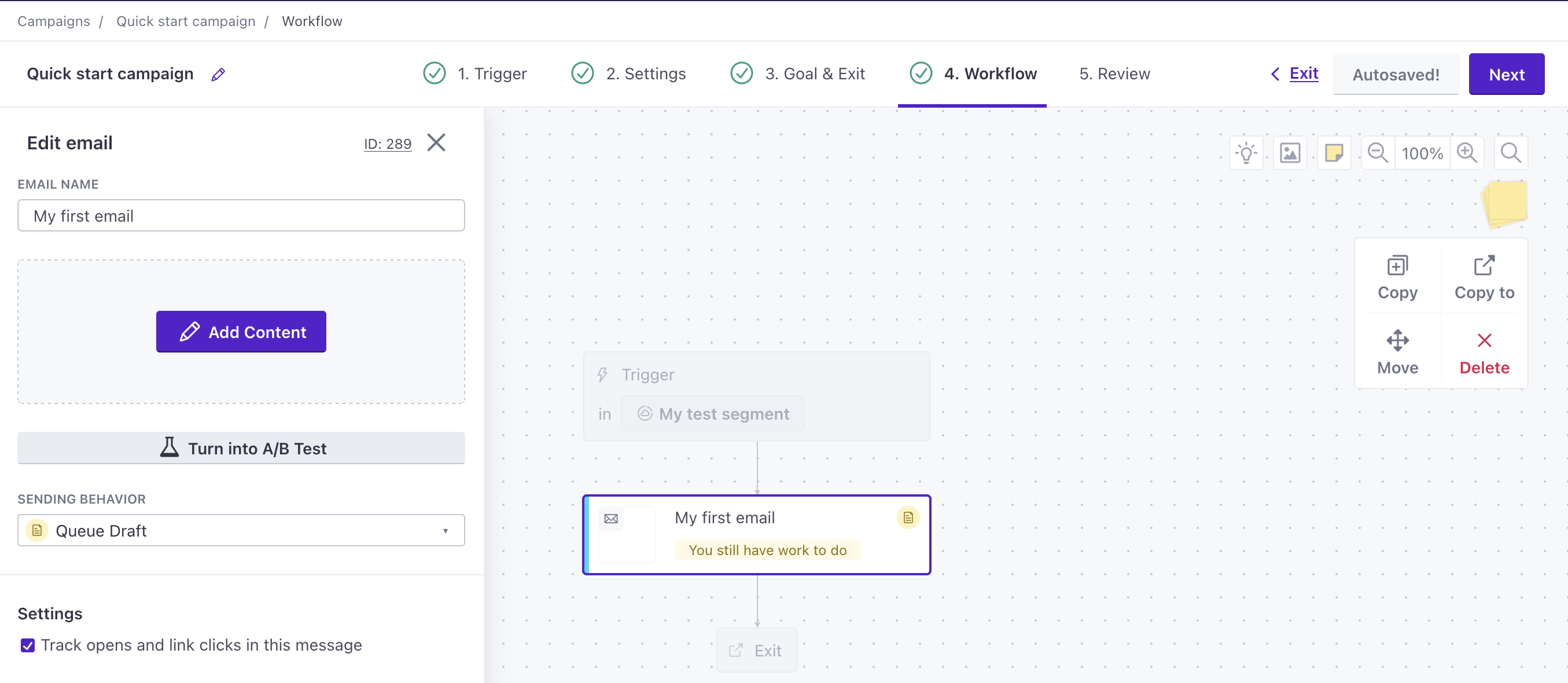

- Pick one of the editors. In most demonstrations, we use the drag-and-drop editor to send stylized messages that resonate with your audience. But, for this example, we’re using the rich text editor because it’s easier to show off the personalization features of Customer.io.


- In the From field, choose one of the Sender addresses you added when you set up email as a message channel.
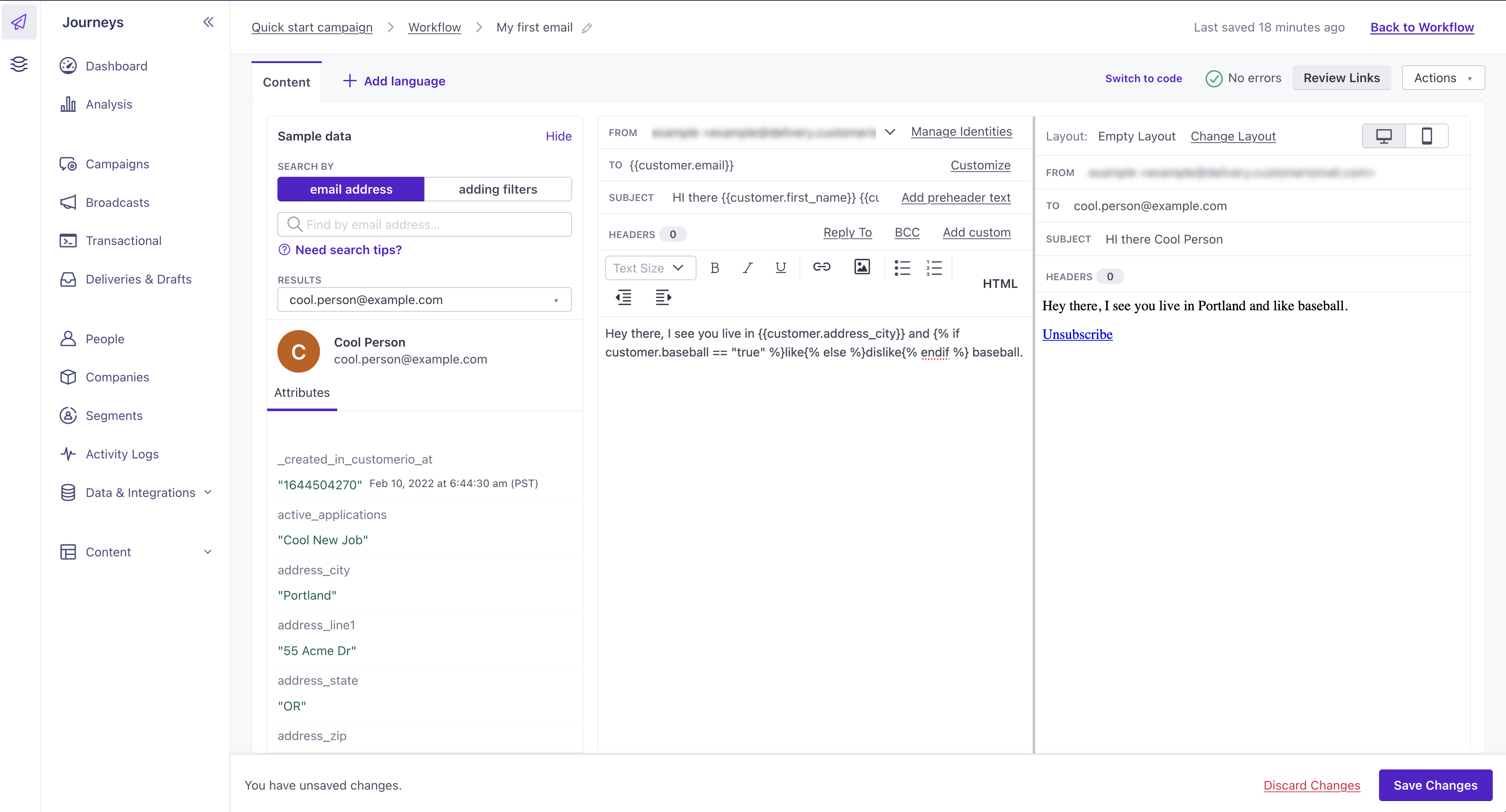

- Add a subject line.
- Create your email. We added liquidA syntax that supports variables, letting you personalize messages for your audience. For example, if you want to reference a person’s first name, you might use the variable
{{customer.first_name}}. to personalize the message with your test person’s first name. You can use{{customer.<attribute_name>}}to reference any attribute value associated with your audience. You can also create conditions and set fallbacks when attributes don’t exist. - Click Save at the bottom then Back to Workflow at the top.
- Click Settings. Under Sending Behavior, note that this message is set to “Queue Draft.” This means after the campaign is live, we would draft this email, but not send it to your audience. Update this to “Send automatically” then save your changes.
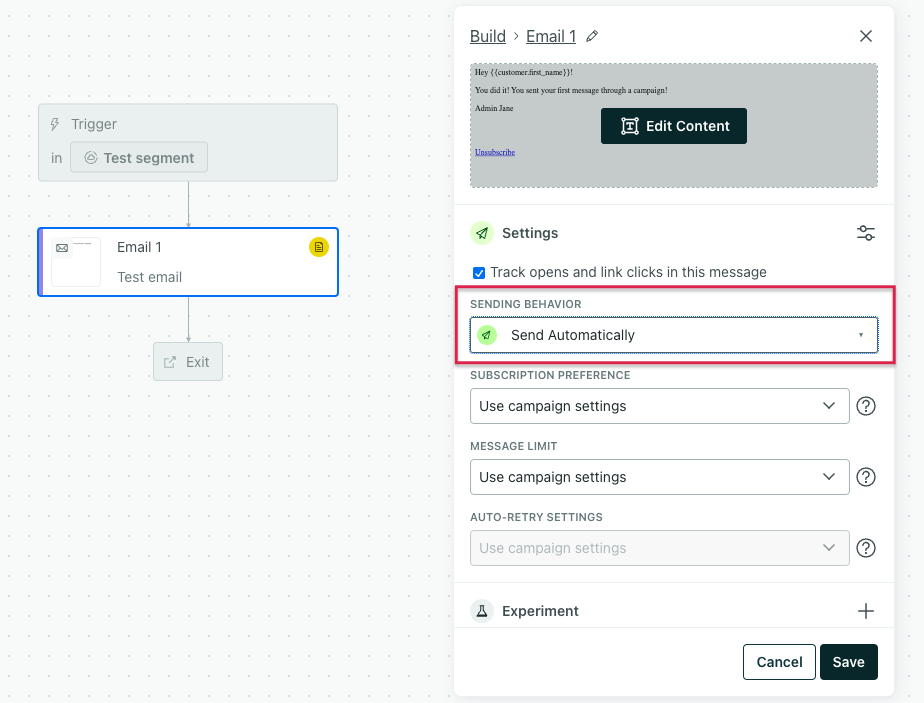

Review your campaign
- Click Review 1 item next to Start Campaign. Notice you still have to set a goal.
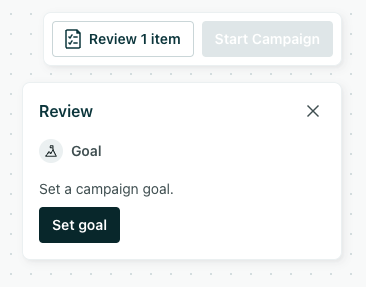

- Click Set Goal. Since this is a test campaign, we’ll choose “No goal.” Then click Save changes.
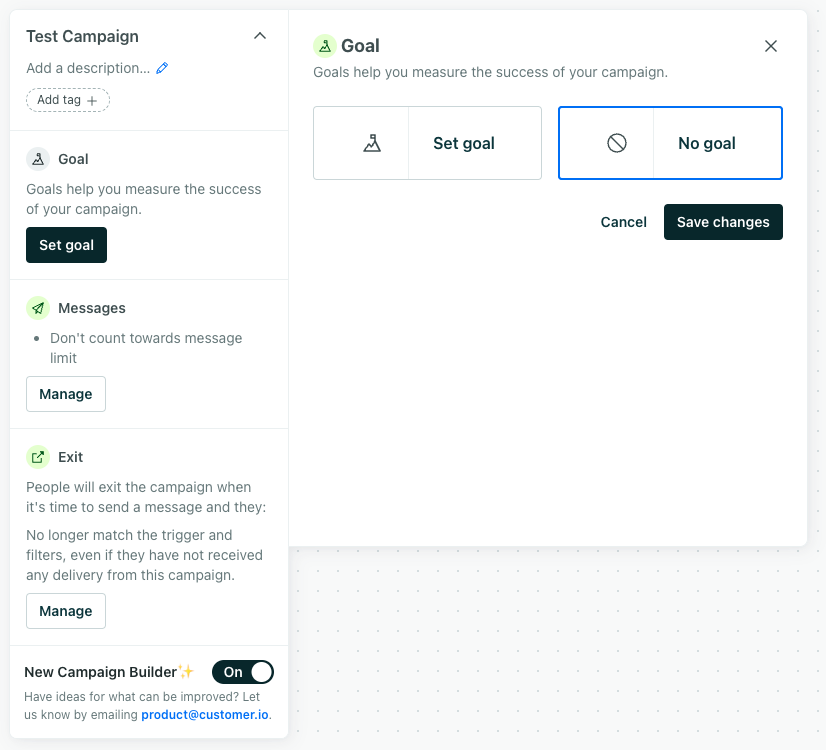
 Notice you can also change message settings - like subscription preference and message limits - and exit conditions from this panel. By default with segment-triggered campaigns, people exit early when they don’t match your trigger or filter criteria - in this case, when their first name changes.
Notice you can also change message settings - like subscription preference and message limits - and exit conditions from this panel. By default with segment-triggered campaigns, people exit early when they don’t match your trigger or filter criteria - in this case, when their first name changes. - Click Start Campaign to review your campaign. Under Trigger, choose who you want your campaign to include: existing matches (people already stored in your workspace) and/or future additions. We’re using Current people and future additions so our existing test person enters the campaign.


- Click Start Campaign.
Within a minute, you should get your first email!
This was quick. Is it really that easy?
This guide walks you through the most common parts of Customer.io so you can start sending messages as quickly as possible. But it’s not comprehensive. You’ll get the most out of Customer.io when you carefully plan your implementation, capture the right data, and automate your messaging strategy.
That all takes time.
So, while we can get you started in just a few minutes, and demonstrate some common features of Customer.io, it’ll take more than this quick start to get you over the finish line!

